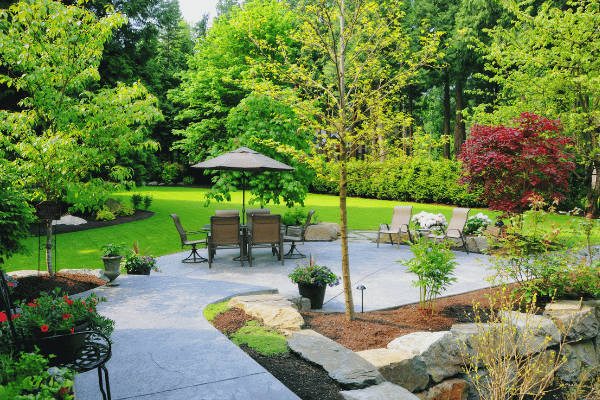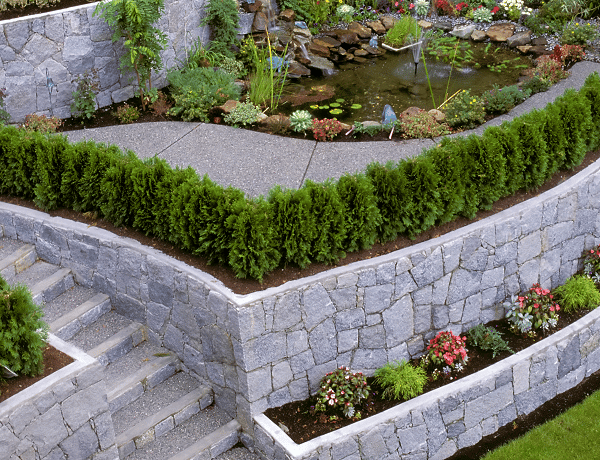Most homeowners are unaware of the approvals required for landscaping their outdoor space and structural elements. What is allowed and what is not? Here’s some information that will help you take constructive steps when seeking local council permission to renovate your yard.
What is a landscaped area?
As per local council, landscaped area is defined as an area of open space on the lot, at ground level, that is permeable and consists of soft landscaping, turf or planted area and the like.
When do you need a retaining wall?
If your front yard or backyard has slope, then building a retaining wall is imperative to control soil erosion and drainage, usability of the yard. Within residential allotments, the maximum height of the retaining wall should be 0.6 metres.
Building a retaining wall
- A retaining wall built on its own can go up to 0.6m in height and does not require council approval.
- The retaining wall can be integrated with the boundary fence (side and rear side) to the height of 1.8 m. Corner lots might have different criteria. Check with your local council.
- Retaining walls built above 0.6m in height require council approval before construction.
- The retaining wall should not be built over the easement in your lot.
READ ALSO: Pool friendly plant choices

Nature strip in your front yard: What is allowed?
According to council websites, nature strip (or verge) is public land between the edge of the road and the boundary of your property. Pedestrians use this nature strip, and it conceals a variety of essential services such as sewerage, water pipes, telephone power and gas. Check with local council if you would like to enhance that space. For vehicular access (eg driveway), council requires a separate application form.
What is the maximum height permissible for boundary fence?
Boundary fence height can be 1.8 m high on the side and rear. If yours is a corner block, refer to development control regulations of your local council. Depending on the primary road your residence faces, the front yard fence height will vary. Changes to boundary fence need consent from your neighbors, since it is governed by NSW Dividing Fences Act 1991 (DFA).
What is easement?
Easement is a section of land registered on your property title which gives someone the right to use that land for a specific purpose, such as the council using it for access to sewage. No permanent structures are allowed on the easement.
What is cut and fill?
Cut and fill is the actual process of moving earth from one place to another to make the ground more level. Cut and fill should be maximum 500mm for most councils, anything above will require council approval.
Spa, swim spa and swimming pool require separate approval from council.

What are things exempt from council approval?
Turfing, planting, small raised beds, lattice, and arbor for climbers, concreting on the sides and backyards, paving in the side and rear yard, decks, pergola are exempt from council approval if not more than 25 sq m and it fulfills council development standards.
Disclaimer: This article is for information/educational purposes only, prepared for single dwelling residential lots. New developments have site-specific developmental controls. This article does not consider heritage-listed land and environment living zones. Contact council for site specific and zone-specific developmental controls.
Information presented here is sourced from Hills Shire and Blacktown City Councils.




